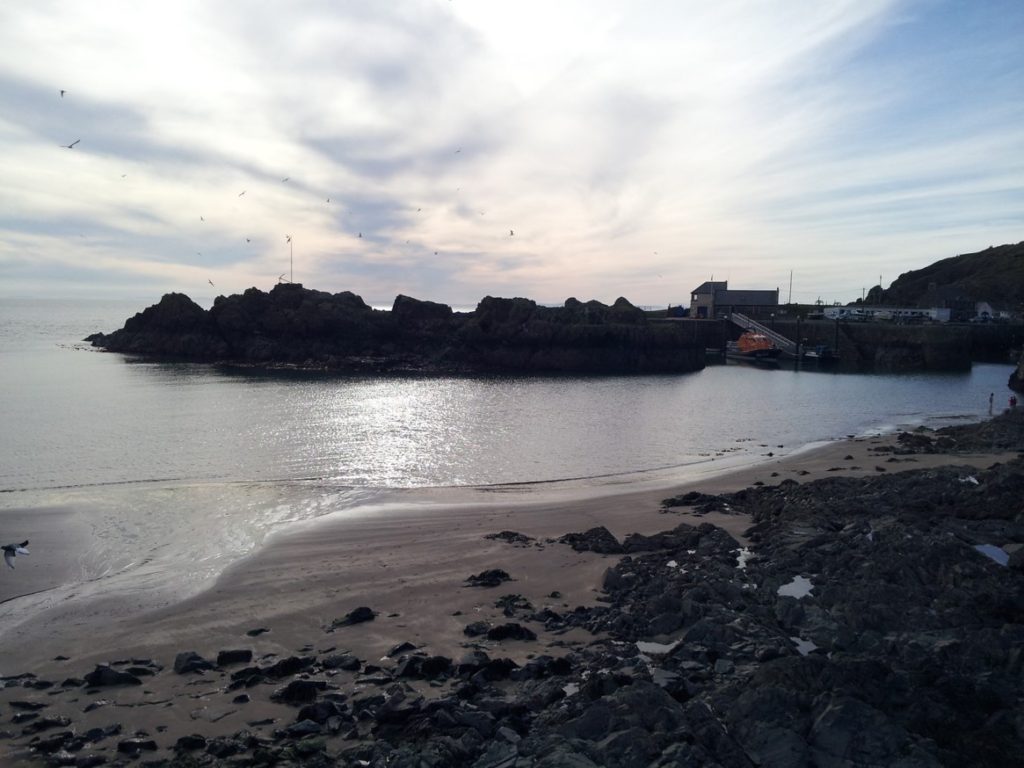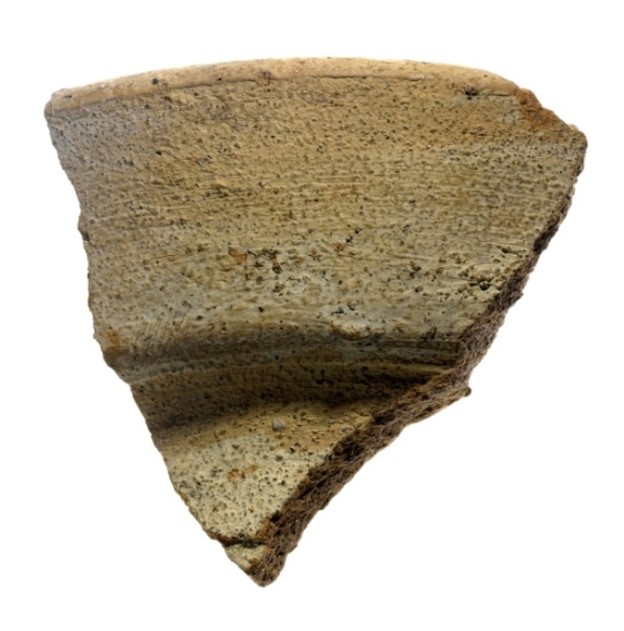Fraser Hunter is the principal curator of Iron Age and Roman collections at National Museums Scotland. His primary research interests are understanding Iron Age decorative metalwork (“Celtic art”) in its European context, understanding the impact of the Roman world on the peoples of Scotland in its Empire-wide context and making the most of Iron Age material culture. Fraser is one of the specialist authors for the A75 Dunragit Bypass post-excavation works and is this month’s guest contributor to the blog.
Sometimes on an excavation it’s the smallest of finds that can tell the biggest stories. The excavations of an Iron Age settlement at Myrtle Cottage on the Dunragit bypass produced a curious little bronze object, only 70mm long, inside one of the Iron Age roundhouses. It looks a bit like a safety pin, with an arched body hammered out of a piece of bronze, and a separate hinged pin that clicked it shut. When I first saw it, it puzzled me. It looked like a Roman brooch – but not a type I’d ever seen in Scotland. What was its story?
Dunragit Brooch
This is where the backroom work comes in. Making my way along a shelf of books covering all shapes and sizes of Roman brooches, I hunted it down. Now I realised what had puzzled me. Yes, this was a Roman brooch – but made well before the Romans reached Scotland.
The Roman army arrived in what is now Scotland in the late 70s AD. They probably got to this bit of Galloway in AD 80. But they reached southern England much earlier in AD 43. The invading legions didn’t just bring their swords and spears with them, but their brooches too.
A popular military fashion at that time was a brooch made from a strip of brass. It was mass-produced in Gaul, and often stamped with the maker’s name, Aucissa. This ‘brand-name’ brooch was widely copied by other manufacturers. Subtle clues show that our brooch is one of these copies, made in Dorset, in southern England, in the years after conquest. The shape of ours isn’t right for an original Aucissa, which has a much higher arch to the bow; ours looks much more like these Dorset brooches. There are technical links too, such as the precise way that the pin was fixed, which match the English finds rather than the French ones. And there are clues from scientific work. We analysed the metal, and discovered it was bronze (an alloy of copper and tin), which was commonly used in Britain for brooches, rather than brass (a mix of copper and zinc), which was used for real Aucissa brooches. These brooches were made between the 40s and 60s AD, and had fallen from fashion by the time the Roman army reached Scotland.

Aucissa brooch (Metropolitan Museum of Art, New York; CCO 1.0)
So … a Roman brooch that reached Wigtownshire before the Romans did. Why was it here? The findspot sits on the edge of Luce Bay – a place rich in archaeology. Stray finds from the sand dunes show that this area was well-connected in the Iron Age. The sea, not the land, was the easiest way to move any distance, and Wigtownshire was tied into seaways up and down the west coast. When you stand on the Wigtownshire coast, you look across to Ireland, England, and the Isle of Man. Jump in a boat and head south, and you’ll be in Cornwall in a couple of days. Some of the finds from the sands show links to south-west England – evidence of travel, trade and political links up and down the west coast. So perhaps the brooch travelled along long-established contact routes that travellers had followed for centuries, without the need for a travelling Roman.

Irish coast from Portpatrick
But there’s another possibility. Roman finds of this early date are very rare in Scotland, and they’re widely scattered, even reaching Orkney and Shetland. This looks less like casual visitors and more like a deliberate pattern – the residue of Roman scouting expeditions, exploring these northern waters in the years before conquest, making connections, finding who might be friendly and who wasn’t. It’s a lot of weight to put on one little brooch – but could it be a hint that the Romans were scouting out Wigtownshire in the years before the legions came?

Roman amphora sherd from Gurness in Orkney
So, ours is a brooch with a story. But there’s more to squeeze from it yet. Why did it survive? It’s unusual to find an intact bronze object like this, because bronze was precious and would be melted down and recycled. It seems unlikely that it was just lost – it came from a building that was otherwise kept pretty clean, not with piles of rubbish on the floor. Such an exotic item was probably valued and cherished, not abandoned as rubbish. I have another theory – that it was left there deliberately, as an offering. A lot of the nice, intact finds in our museums come from unexpected places – buried under buildings, left in lochs, placed in ancient cairns. This wasn’t carelessness or messiness, but purposeful acts. It seems people thought that sometimes an offering or sacrifice of a valued object in a special place was needed. We don’t know why. Perhaps it was to bring luck, or to thank the gods or the spirits for something. Perhaps it marked a rite of passage, when the owner went from child to adult, or single to married. In our case, it might have been left when the house was abandoned, as thanks for happy times or to remember its former owner. We don’t know – we can’t know, after almost 2000 years. But it was no accident. This little piece of bronze, a marker of contacts with a distant world, was deliberately placed in the old house as a valued and powerful object. It survived to tell its story – and not a bad story from such a strange little brooch.
